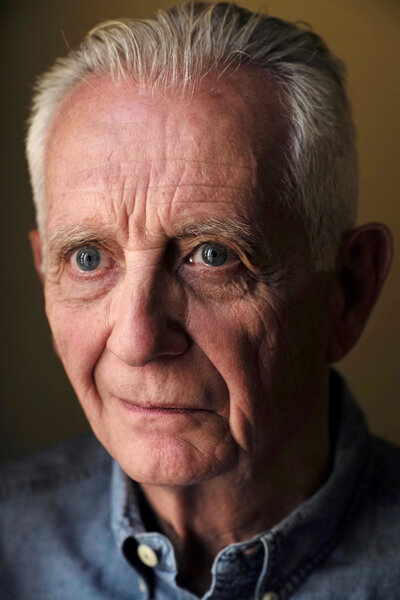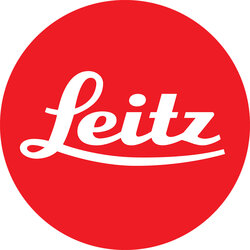Denis Lenoir, AFC, ASC, the go-between
By Ariane Damain Vergallo for Leitz Cine WetzlarThe idea that ‘‘bourgeoisie dunces’‘ are particularly successful in photography - a way for them not to downgrade - has always interested him. Born in that milieu and a “lazy, lousy student,” Denis Lenoir totally recognizes himself in that analysis.
An only child, he lives on the Rue de la Victoire in Paris with his parents and his paternal grandmother, right above the Amieux canning warehouse his ancestors founded in Nantes a century ago.
Soon after his birth, his young parents decide to split and have the idea - daring at the time - to divide their large apartment into two, their son’s room occupying a central position. So he lives with his mother and, right next door, his father lives with his own mother. Fodder for future psychonalysts !
Since neither his mother nor his father is into parenting, the young Denis Lenoir is raised — so to speak - by his affectionate and funny grandmother whom everyone calls “Dragée” (Candy) because she has a particularly sweet tooth and loves sugared almonds. Considering that nonchalant (to say the least) education and that eminently free rein, is it a wonder he might be almost naturally driven to cinema ?
After getting his “baccalaureate” in 1968 — a unique vintage - Denis Lenoir first enrolls in the prestigious School of Medicine, but instead of attending class, he spends his life at the Cinémathèque Française, seeing - by his own assessment - five hundred films in that single year. At the time, however, he has no inkling that he will embrace cinema as a profession.
Then one day, his mother says : ‘’Denis, if you feel so passionate about films, why not make it your profession instead of just a hobby ?’’
No sooner said than done. He enters for the Louis-Lumière Film School competing admission exam and finally gets in, although he ends up seventh on the waiting list (the gods are with him, no doubt !) and after completing his military service in the Army’s Film Unit.
But somehow, throughout his years at the Louis-Lumière School, things don’t click. For once a dunce, always a dunce, and he feels those years are totally wasted. No light-bulb moment.

Yet, done with school (and out of sheer luck, he admits), he lands a few jobs as assistant cameraman to such renowned cinematographers as Ricardo Aronovich and Bernard Lutic. But he turns out to be such a ‘’lousy, inefficient’’ assistant that none of them ever calls him back.
Like so many other Western countries in the 1970s, France lives an enchanted parenthesis. The sexual revolution is entering its second decade, contraception is now common but AIDS not yet looming. Consequently, Denis Lenoir gleefully, and definitely, forsakes basic assistantship and opts for direction of photography in a very specific field : porn.
At the time, porn movies are shot in three weeks and on 35mm. ‘‘Sex was a party, and we filmed it like something absolutely normal.”
He learns how to expose film stock, but, as he remembers, he still has “no eye’‘.
‘‘I didn’t see anything.’’
Quite a paradox for someone - particularly a cinematographer and particularly on that kind of films - whose primary function is to watch and see better than everybody else.
After a year and a half (he is just about 30 then), he turns to institutional films and becomes cinematographer/gaffer/ assistant cameraman to a producer who doubles up - triples up ? - as director and cameraman while another guy takes care of sound and editing. And right there, in the midst of that nanoteam, Lenoir finally has that light-bulb moment.
As he just lit up - as best he can (or so he thinks) - a scene taking place in a Renault car-assembly factory, the director approaches him and simply says : ‘‘Denis, it’s flat !‘‘ Earthquake, electroshock, revelation. At that very moment, Denis Lenoir realizes his mission is to look, to seek, to learn.
The man who-did-nothing-learned-nothing at the Louis-Lumière Film School now works double-hard : he enrolls in a sensitometry course, soon followed by a course on the history of painting at the École du Louvre. ‘‘I finally learned my craft on the job’‘.
As he remembers it, when he shot his first feature film as a cinematographer - Martin Veyron’s L’amour propre ne le reste jamais très longtemps (G(ee), The Hottest Spot !) - he felt like an impostor who would ultimately be unmasked, revealed and exposed. A feeling that never quite left him.
That lack of confidence (alright, “modesty”) is disconcerting when one looks at his impressive body of work (more than fifty films) that corrals such major directors as Raoul Ruiz, Patrice Leconte, Bertrand Tavernier, François Ozon...
... and most prominently, perhaps, Olivier Assayas who directed Désordre (Disorder), Lenoir’s second feature as a cinematographer. A friendship was born, in addition to a collaboration that counts no less than seven films.
In 1997, Lenoir moves to Los Angeles with his new young American wife (whom he met while shooting a comedy in Chicago). Despite the fact that he is champing at the bit, waiting for American studios offers that never come, he turns down two jobs with directors Jacques Audiard and Cedric Kahn. Along with two other film projects by Assayas, those are his only (but huge) regrets in a prolific professional life that may possibly never end.
For the moment he wakes up, be it in his Los Angeles home or his Paris apartment, he feels instantly filled with the primal energy to conquer...the world !
As he (more) simply puts it, ‘‘I’m born every morning’’.
Only recently has Denis Lenoir become aware that his job has always been two-fold : cinematographer (of course !) but also ‘‘transmitter”, go-between. One learns filmmaking by just doing it then, however unconsciously, transmitting one’s knowledge on to others.
But transmitting is a two-way street (Lenoir will still take into account any of his trainees’ comment or suggestion), if not a multi-way round-about. Cinematographers cannot blame directors for calling on other cinematographers, Lenoir thinks, for ultimately, young or old, experienced or not, they will all harvest whatever it takes to enrich their own work. “A virtuous circle,” he says.
Does director Mia Hansen-Løve even suspect that the ‘‘drawer’‘ technique Denis Lenoir uses on her films comes from director Patrice Leconte who tried it on Tandem, their first feature film together some thirty years ago ? That ‘‘drawer’‘ technique consists of doing a small back-and-forth tracking shot when one wants to follow an actor in a panoramic shot without changing their size on screen.
And does she imagine that, on Righteous Kill (which starred Al Pacino and Robert de Niro), Denis Lenoir was advised by American director Jon Avnet never to anticipate a panoramic shot just so as not to let the viewer guess what lies ahead ?
Mia Hansen-Løve often chooses to start a tracking shot as late as possible in order to give the viewer the feeling the actors themselves are ‘‘pushing’‘ the camera - thus unknowingly basing herself on that very same idea.
This summer, Mia Hansen-Løve and Denis Lenoir began filming Bergman Island, the first part of which was shot - on regular film stock - on the Swedish island of Farö. Much to his amazement and delight, Denis Lenoir discovers those northern lights where the sun never rises very high in the sky, causing dawn and dusk - the “magical hours” - to expand inordinately.
‘‘It was a happy, exhilarating shoot. The light was amazing and every single shot a knock out.’‘
In a completely unrelated field, he also notices that the oversensitivity of digital media has one unexpected effect : when shot in very low light, the black pupils of the actors’ eyes expand and ‘‘bite’‘ onto the irises, thus disadvantaging those who have clear eyes.
‘‘The viewer ends up robbed of the beauty of the actor’s blue eyes’‘.
On a previous Mia Hansen-Løve film - L’Avenir (Things to Come, starring Isabelle Huppert), Denis Lenoir proceeds to a series of blind tests to select the “right” lenses. The Leitz Summilux-Cs are chosen for their softness, color rendition and flare. The very same he favors, once again, on Bergman Island.
“If I want beauty, I’ll go for them without the slightest hesitation.”
Bergman Island will not be released until 2020. One of the main actors having pulled out at the 11th hour, the second part of the film will be shot in the summer of 2019. The many twists and turns of casting and filming drove Denis Lenoir to start a tell-all diary that will come out...once the film is released.
By which date the sun will rise and set many a time on both sides of the Atlantic, in the two countries Denis Lenoir favors most : France and the United States.
Once a go-between...
(Translated from French by Henry Béhar)
 En
En Fr
Fr





